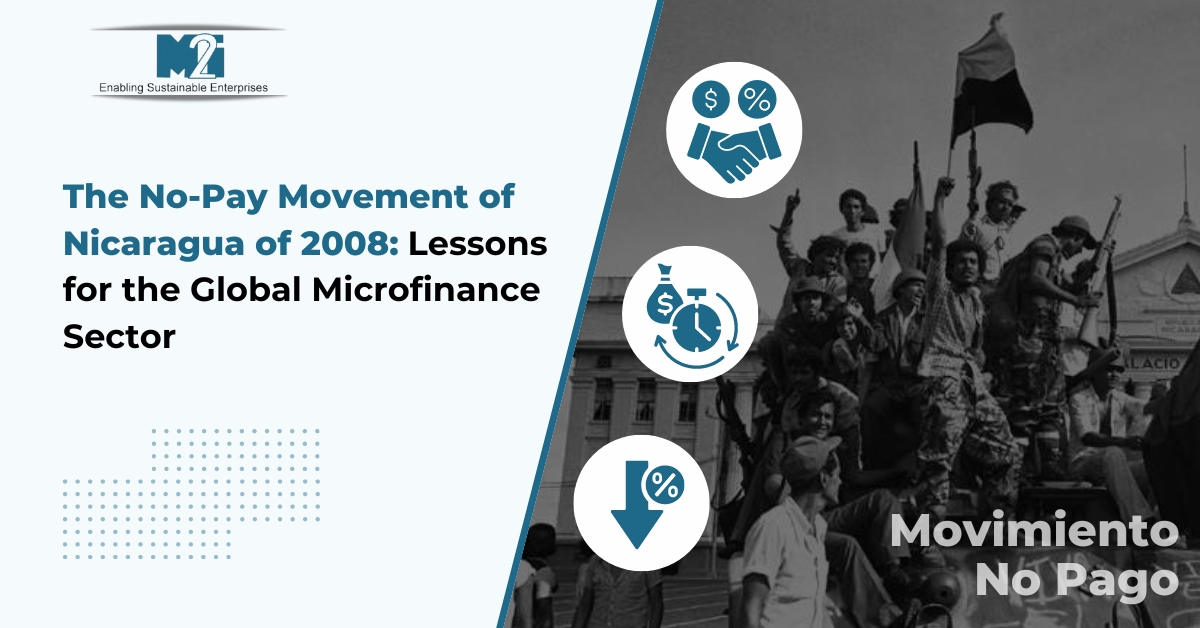
The No-Pay Movement of Nicaragua of 2008: Lessons for the Global Microfinance Sector
The No-Pay Movement that swept through Nicaragua in 2008 and the ensuing years offers critical lessons for the microfinance sector worldwide. This grassroots movement, led by a politically motivated group including small-scale producers, merchants, and microentrepreneurs, resisted the repayment of loans to microfinance institutions (MFIs), citing exorbitant interest rates and exploitative practices. Their actions, including protests and demands for a legislative moratorium on repayments, plunged the Nicaraguan microfinance sector into a crisis, with significant implications for its clientele and the broader financial ecosystem.
The Genesis of the No-Pay Movement
The movement gained momentum following remarks by President Daniel Ortega, criticizing the microfinance industry for usury. The subsequent protests and blockades, particularly in northern Nicaragua, highlighted the borrowers' grievances, notably the high-interest rates charged by MFIs, which left many in unmanageable debt.
Impact on the Microfinance Sector
The crisis resulted in a substantial decrease in the number of clients served by Nicaraguan MFIs—from 324,000 before the crisis to approximately 225,000—and a dramatic drop in the total portfolio from US$420 million in 2008 to US$170 million. The industry also faced a significant rise in the portfolio at risk, with over 100,000 clients ceasing to receive credit.
Lessons for Microfinance Institutions Worldwide
Interest Rate Management: The core issue that fueled the No-Pay Movement was the perception of high and unmanageable interest rates. MFIs must ensure that their interest rates are transparent, justifiable, and tailored to the economic realities of their clients.
Political Sensitivity: The Nicaraguan case illustrates how political narratives can influence borrower behavior. MFIs must navigate the political landscapes of their operating regions adeptly, engaging with policymakers to advocate for balanced and fair regulation.
Risk Management: Diversification of loan portfolios and more rigorous assessment of borrowers' repayment capacity can mitigate risks. Implementing flexible repayment schedules and emergency hardship considerations can also help in managing risks associated with widespread non-payment movements.
Community Engagement: Building strong relationships with the communities they serve can help MFIs understand and address the grievances of borrowers before they escalate into larger movements.Regulatory Framework: The crisis underscored the need for a robust regulatory framework that oversees microfinance operations without stifling their ability to serve low-income populations. Such frameworks should ensure transparency, fairness, and accountability within the microfinance sector.
Response to Financial Crises: The IMF's involvement in advocating for a Microfinance Law in Nicaragua highlights the importance of timely and supportive intervention by financial institutions in crisis situations. Such laws can enhance the supervision, transparency, and efficiency of the microfinance sector.
The Nicaraguan crisis serves as a cautionary tale for the microfinance industry globally. It emphasizes the importance of balancing profitability with social responsibility and the need for MFIs to remain vigilant about the socio-political dynamics that affect their operations. By learning from the No-Pay Movement, microfinance institutions can better equip themselves to face challenges and continue to fulfill their mission of providing financial services to the world's underserved populations.